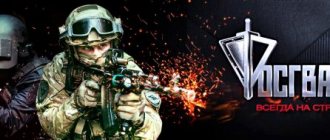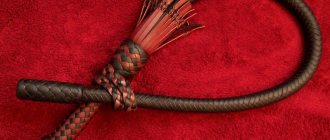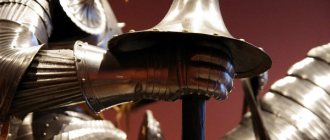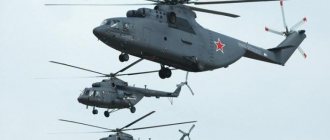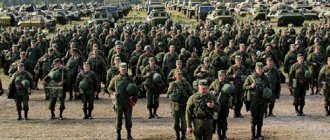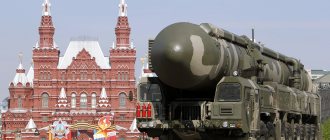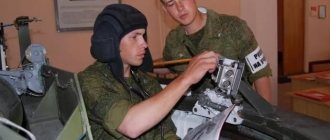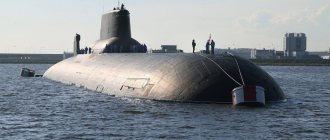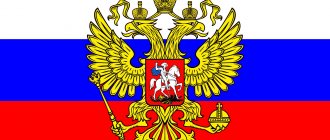It was in the past the fundamental branch of the military, cutting through foot troops like a knife through butter. Any cavalry regiment was capable of attacking enemy foot forces ten times greater, since it had maneuverability, mobility and the ability to strike quickly and powerfully. The cavalry could not only fight in isolation from the rest of the troops, it could cover long distances in a very short time, appearing in the rear and flanks of the enemy. A cavalry regiment could instantly turn around and regroup depending on the situation, change one type of action to another, that is, the fighters knew how to fight both on foot and on horseback. Problems were solved in all the diversity of combat situations - tactical, operational, and strategic.
Cavalry classification
Just like in the Russian infantry, there were three groups. Light cavalry (hussars and lancers, and since 1867 Cossacks joined them) was intended for reconnaissance and guard service. The line was represented by dragoons - they were originally called dragons when the infantry had just been mounted on horses. Subsequently, this became precisely the cavalry regiment that could operate on foot. The dragoons gained particular fame under Peter the Great. The third group of cavalry - irregular (in translation - incorrect) and heavy - consisted of Cossacks and Kalmyks, as well as heavily armed cuirassiers who were masters of close attacks.
In other countries, cavalry was divided more simply: into light, medium and heavy, which depended primarily on the weight of the horse. Light - horse huntsmen, lancers, hussars (a horse weighed up to five hundred kilograms), medium - dragoons (up to six hundred), heavy - knights, reiters, grenadiers, carabiniers, cuirassiers (a horse in the early Middle Ages weighed more than eight hundred kilograms). The Cossacks of the Russian army were long considered irregular cavalry, but gradually fit into the structure of the army of the Russian Empire, taking their place next to the dragoons. It was the Cossack cavalry regiment that became the main threat to the enemy in the wars of the nineteenth century. Mounted troops were divided into units according to management requirements and assigned tasks. These are strategic, tactical, front-line and army cavalry.
Kievan Rus
Kievan Rus knew two types of troops - infantry and cavalry, but it was with the help of the latter that battles were won, engineering and transport work was carried out, and the rear was covered, although the main place was, of course, occupied by infantry. Horses were used to transport warriors to the area. This happened until the eleventh century. Then the infantry achieved victory on equal terms with the horsemen for some time, then the cavalry began to dominate. Perhaps it was then that the first cavalry regiment appeared. Constant failures in the war with the steppes taught the Kyiv princes a lot, and soon the Russians became no worse riders: disciplined, organized, united, brave.
Then the main victories of the Russian army began. Thus, in 1242, cavalry played a huge role in the defeat of the Teutonic Order (Battle of the Ice). Then there was the Battle of Kulikovo, where the ambush reserve cavalry regiment of Dmitry Donskoy decided the outcome of the battle with the horde army. The Tatar-Mongols had shock, light cavalry, excellently organized (tumens, thousands, hundreds and tens), excellent command of the bow, and in addition, a spear, saber, ax and club. The tactics were partly Persian or Parthian - entry of light cavalry into the flanks and rear, then accurate and prolonged shelling from Mongol long-range bows, and finally an attack of crushing force, which was carried out by heavy cavalry. The tactic is proven and almost invincible. And yet, in the fifteenth century, the Russian cavalry had already developed so much that it could withstand it.
Medieval cavalry of Eastern Europe and Asia
If in Europe the appearance of the stirrup led to a sharp increase in the growth of horses, then the horses of the nomads of Eurasia in the Middle Ages did not change at all. Only a very small horse could survive the winter by digging out last year's grass from under the snow.
| Shadowfur, Gandalf's magical horse (painting by John Howe). |
In the Black Sea region, the Polovtsy, and then the Tatars, continued to breed light, swift and tireless Scythian horses. The Tatars not only rushed like the wind over short distances, but also covered up to 100 kilometers a day. Whereas the European cavalry is only 30 kilometers. On the other hand, the Tatar horses were not only too weak for battle, but also quickly tired under the saddle. Even a lightly armed horseman had to have two horses.
Mongolian horses were even smaller. If the height of Tatar horses was 140-145 cm, then Mongolian horses had only about 130 cm at the withers. Of course, they could not develop great speed on their short legs, and the rider no longer needed two, but three or four such horses. But in terms of endurance, Mongolian horses were superior to Tatar horses to the same extent as Tatar horses were superior to European ones. During the day, the Mongol cavalry sometimes covered 200-240 km. The riders could stand it no longer.
The horses of the Arabs looked completely different. They didn’t have to dig up last year’s grass. There is no snow or grass in Arabia...
Arabian horses lived in stables, ate grain, dates and dried fish, and were intended only for war. They were, of course, inferior in strength and height to the Destrie, but they were even superior to European riding horses. The endurance of the Argamaks caused attacks of the darkest envy among Europeans. During the day, the Arabs covered the same 100 km as the Tatars, but each horse carried two warriors in armor.
| In Rus', horses began to be used on farms in the 6th-8th centuries. Horse riding became known in the 9th century, and from the beginning of the 11th century stirrups began to be used. The Russians went on a raid against Byzantium or the Khazars either by boat or on horseback. But most of the “cavalry” in the 9th-11th centuries rode short working-type horses without stirrups, and dismounted for battle. The princes also dismounted, with the only difference being that the fast Polovtsian “fari” horses served as elite transport at that time. But by the end of the 11th century, the princes and boyars in Rus' mounted the “heroic horses” of war. And from the beginning of the 12th century, just as it happened two centuries earlier in Europe, heavy cavalry became the main force in the Russian expanses. Light Polovtsian horses continued to be used by horse archers during this period. In the 14th century the situation changed again. The need to fight the Tatar cavalry led to the desire to increase the speed of horses even at the expense of their strength. After all, in order to attack the enemy, you must not be inferior to him in mobility. The Russian warriors were forced to switch to the same horses used by the armored cavalry of the Tatars - the “ Ulans” " Russian war horses became fast and unpretentious, but they were inferior in strength not only to destrie and Arabian horses, but also to European riding breeds. The insufficient “strike force” of cavalry contributed to the fact that infantry continued to remain important in Rus' in the Middle Ages. |
The light cavalry of the East acted in much the same way as the Scythians in ancient times. The Tatars or Mongols showered the infantry with arrows. Spears, sabers and clubs were used only for fighting with cavalry. An imitation of a raid on infantry could also be undertaken. But only for the purpose of frightening. Small steppe horses would not have taken spears anyway. It's another matter if the infantry fled. Any horse is big enough to crush people individually.
| Welsh pony. “Pony” is the English name for work horses. In the Middle Ages, there were 10 times more ponies than tall riding and war horses. | Mule, a hybrid of a mare and a donkey. It is distinguished by its endurance and unpretentiousness (illustration by Keith Parkinson for the role-playing game Ars Magica). |
Firearm
The sixteenth century brought to the fore light cavalry armed with firearms, due to this both the methods of warfare and the methods of using them in battle changed. Previously, a separate cavalry regiment attacked the enemy with edged weapons, but now shooting was organized in ranks directly from horseback. The formation of the regiment was quite deep, up to fifteen or more ranks, which advanced one by one from the battle formation to the first row.
It was then, in the sixteenth century, that dragoons and cuirassiers appeared. The seventeenth-century Swedish cavalry consisted entirely of them. On the battlefield, King Gustav Adolf lined up his cavalry in two lines of four ranks, which gave the army a huge powerful force, capable of not only attacking decisively, but also maneuvering flexibly. It was from there that the army composition of squadrons and cavalry regiments appeared. In the seventeenth century, cavalry made up more than fifty percent of the army in many countries, and in France there was one and a half times less infantry.
We have
In Russia in these centuries, cavalry was already divided into heavy, medium and light, but much earlier, in the fifteenth century, local mobilization of people and horses was created, and its development greatly differed the training of Russian cavalry and Western European cavalry. This recruitment system replenished the Russian troops with a very large number of noble cavalry. Already under Ivan the Terrible, it became the leading branch of the army, numbering eighty thousand people, and more than one Cossack cavalry regiment took part in the Livonian War.
The composition of the Russian cavalry gradually changed. Under Peter the Great, a regular army was created, where the cavalry consisted of more than forty thousand dragoons - forty regiments. It was then that guns were handed over to the horsemen. The Northern War taught cavalry to act independently, and in the Battle of Poltava, Menshikov’s cavalry acted very inventively on foot. At the same time, the irregular cavalry, which consisted of Kalmyks and Cossacks, became decisive for the outcome of the battle.
Border parts
The borders of our country are now guarded by the corresponding FSB service. It is armed with armored personnel carriers and armored cars, aviation and self-propelled artillery. It would seem that this is quite enough to detain border violators or stop local conflicts.
But here one problem appears. Often the border runs through mountainous terrain or dense forests. How to control such areas of our borders? Perhaps modern means should come to the rescue: aviation, unmanned aerial vehicles and electronic tracking systems? But such border protection will be too expensive.
And again the horse comes to the rescue! Moreover, the mounted units in the border service brought a lot of benefit to the Soviet army. Even when all that was left of the cavalry corps were memories and the Mosfilm cavalry regiment, some USSR mountain outposts had cavalry for patrolling difficult sections of the border.
(Photo: Mikhail Mikhin)
But a horse can be useful not only in the mountains. It also successfully moves through wooded areas and wetlands. And in general, as a rule, good roads are rarely laid along the border... And where there are no roads, only a rider can quickly move from point “A” to point “B”. And finally, let's remember the cavalryman's ability to conduct visual reconnaissance. This opportunity is many times higher than that of a border guard traveling on foot or in an armored personnel carrier.
Charter
Petrine traditions were revived in 1755 by Queen Elizabeth: the Cavalry Regulations were developed and implemented, which greatly improved the combat use of cavalry in battle. Already in 1756, the Russian army belonged to a guards cavalry regiment, six cuirassiers and six grenadiers, eighteen full-time dragoons and two supernumerary regiments. The irregular cavalry again included Kalmyks and Cossacks.
The Russian cavalry was trained no worse, and in many cases better, than any European, which was confirmed by the Seven Years' War. In the eighteenth century, the number of light cavalry increased, and in the nineteenth, when mass armies appeared, cavalry was divided into military and strategic. The latter was intended for combat both independently and together with other branches of the military, and the military was included from a platoon to an entire regiment in infantry formations and was needed for security, communications and reconnaissance.
Nineteenth century
Napoleon had four cavalry corps - forty thousand horsemen. The Russian army had sixty-five cavalry regiments, including five guards, eight cuirassiers, thirty-six dragoons, eleven hussars and five lancers, that is, eleven divisions, five corps plus separate cavalry corps. Russian cavalry fought purely on horseback, and they played the most significant role in the defeat of Napoleonic army. In the second half of the century, the power of artillery fire increased manifold, and therefore the cavalry suffered huge losses. Then the necessity of its existence came into question.
The American Civil War, however, showed the success of this type of military. Naturally, if the combat training is appropriate and the commanders are competent. The raids on the rear and communications were deep and very successful, despite the fact that the revolvers and carbines were no longer just firearms, but also rifled ones. Americans practically did not use edged weapons at that time. In the United States, the history of the army still enjoys great respect. Thus, the 2nd Cavalry Regiment (dragoon, 2nd Cavalry Regiment) was created in 1836 and gradually, without changing its name, became first a rifle regiment, then a motorized infantry regiment. Now it is located in Europe, part of the US contingent of troops.
World War I
In the twentieth century, even at its beginning, cavalry made up approximately ten percent of the number of armies, with its help tactical and operational tasks were solved. However, the further the armies were saturated with artillery, machine guns and aviation, its cavalry units suffered increasingly huge losses, and therefore became practically ineffective in battle. For example, the German command demonstrated unsurpassed combat skills when carrying out the Sventsyansky breakthrough, when six cavalry divisions were used. But this is perhaps the only positive example of such a plan.
The Russian cavalry of the First World War was numerous - thirty-six divisions, two hundred thousand well-trained cavalry - but successes even at the beginning of the war were very insignificant, and when the positional period began and the maneuvers ended, the fighting for this type of troops practically ceased. All the cavalrymen dismounted and went into the trenches. In this case, the changed conditions of war did not teach the Russian command anything: ignoring the most important directions, it scattered cavalry along the entire length of the front and used highly qualified soldiers as supplies. The exercises were devoted to attacks in close formation in the saddle, and attacks on foot were practically not practiced. After the end of the war, the armies of Western countries were motorized and mechanized, cavalry was gradually eliminated or reduced to a minimum, as in France, Italy, Great Britain and others. Eleven full cavalry brigades remained in Poland alone.
Cavalry in the “War of Motors”
The war began, as we know, with a powerful attack by the Wehrmacht on Poland. Eight successfully mobilized Polish cavalry brigades had to resist the steel German tank wedges.
This is how contemporaries imagined the battle of the Polish Uhlans against German tanks.
Source: pikabu.ru
One of the most widespread myths of the Second World War is associated with this episode. On its very first day, September 1, 1939, the famous battle near Kroyantsy took place. Polish troops retreated before the superior forces of Heinz Guderian's 19th Panzer Corps. In accordance with the situation, the Polish command assigned the 18th Pomeranian Lancer Regiment the task of delaying the Germans in order to give time for the bulk of the troops to leave. Near Tukholsky Bor, Polish Colonel Mastalezh set up an ambush. When two Polish squadrons went on the attack, they were initially successful. They were able to scatter the German infantry and did not even use the reserve (which, by the way, in addition to the horsemen, also included high-speed TK and TKS tankettes). However, a timely counterattack by German armored cars, heavy machine-gun fire and automatic gun fire inflicted terrible losses on the lancers. Colonel Mastalezh died, and the lancers were defeated and retreated.
However, in this battle no one was in a hurry to fly on horseback to cut down German armored cars with sabers and pikes. The lancers had equipment, anti-tank guns, and rifles. Inept battle management and poor communications were the decisive factors in the failure of the Polish attack.
Soviet cavalrymen near Moscow.
Source: weekend.rambler.ru
And journalists from the Axis countries, and Guderian himself, later formed a myth that is successfully maintained to this day about daredevils galloping towards the armor with bladed weapons.
Other attacks of the Polish cavalry during the war with Germany ended according to a similar principle. At the end of the month, the lancers and hussars were no different from the infantry at all: having lost their horses, they fought like ordinary units.
During subsequent campaigns in Europe, one can find references to the use of cavalry: for example, the successful actions of the German 1st Cavalry Division in France. In the Polish campaign it did not show itself at all, but here some tasks were successfully solved, albeit at the cost of losses.
By 1941, horses, with rare exceptions, were used in Europe only as horse-drawn, draft transport, and only before the attack on the USSR, the Allies of the Reich assembled several cavalry divisions, of which three Italian and two Hungarian cavalry brigades can be distinguished.
"We are the red cavalry..."
The formation of the Soviet cavalry began along with the creation of the Red Army, which was quite difficult to do in 1918. Firstly, all the areas that supplied the Russian army with horses and horsemen were occupied by foreign interventionists and White Guards. There were not enough experienced commanders. After the end of the First World War, only three cavalry regiments of the old army completely became part of the Soviet army. The situation with weapons and equipment was also very bad. Therefore, as such, the first cavalry regiment from the new formations did not appear immediately. At first there were just hundreds of cavalry, detachments, squadrons.
For example, B. Dumenko created a small partisan detachment in the spring in 1918, and in the fall it was already the First Don Cavalry Brigade, then - on the Tsaritsyn Front - a combined cavalry division. In 1919, the newly created two cavalry corps were used against Denikin’s army. The Red Cavalry was a powerful striking force, not devoid of independence in operational tasks, but also showed itself excellently in interaction with other formations. In November 1919, the First Cavalry Army was created, and in July 1920, the Second. Associations and formations of the Red Cavalry beat everyone: Denikin, Kolchak, Wrangel, and the Polish army.
Mountain parts
The fighting of recent decades has proven that it is necessary to increase the number of mountain units in the Russian army. As a result, mountain brigades appeared. In terms of their equipment, they are still motorized rifle troops. However, mechanized infantry are not exactly designed for mountain service. There may be no roads there at all, or they may be bad. Or communication routes will be under constant threat of a sudden attack from the enemy.
It is no coincidence that a significant part of the losses during military operations in the mountains occurred precisely during the movement of motorized rifle columns along mountain passes. And no special training of soldiers or intelligence system will ever completely solve this problem. In the event of an attack on a marching column, an armored personnel carrier of mountain units will still remain a “mass grave on wheels.”
It is possible, of course, to transfer all mountain riflemen to walking. But then you can completely forget about the mobility so necessary for light infantry and the saturation of troops with heavy weapons - so useful in modern warfare. You won’t get far on your own two feet and you won’t be able to carry anything but the lightest weapons.
But there is a way out! If you turn mountain units into cavalry, you will suddenly discover that the mobility of such units is no less than that of mechanized units. Yes, a horse moves slower than an armored personnel carrier, but it will go where vehicles cannot. Moreover, it will go unnoticed - which is very important when you are fighting in the mountains. In addition, the cavalry is completely independent of the supply of fuel and repair units - unlike mechanized units - and can easily take a sufficient supply of forage with them.
(Photo: Russian Ministry of Defense)
And most importantly, even a cavalry unit moving in a marching column suffers far fewer losses than a mechanized unit. In the event of an attack, it can disperse throughout the area much faster and go on the defensive.
Of course, cavalry is not needed for a modern field army, but for mountain units a horse is just what is needed. Now mountain units in the Caucasus and Siberia, although formally motorized rifle units, use not only equipment, but also horses.
Cavalry forever
After the end of the Civil War, cavalry remained numerous in the Red Army for a long time. The division was into strategic (corps and divisions) and military (units within rifle units). Also, since the 20s, national units were also present in the Red Army - traditionally Cossacks (despite the restrictions lifted in 1936), horsemen of the North Caucasus. By the way, after the decree of the People's Commissar of Defense in 1936, cavalry units became exclusively Cossack units. Despite the contrary information, which has been everywhere since perestroika, that before the Great Patriotic War the country of Soviets did not have troops larger than cavalry, it is necessary to restore the objective truth: documents say that there was no “Budyony lobby”, and cavalry by 1937 had already decreased by more than half, then by 1940 it was disappearing even more rapidly.
However, off-road is everywhere, and it has no edge. Zhukov repeatedly noted in the first weeks of the war that the cavalry was underestimated. And this was later corrected. In the summer and especially winter of 1941, the WWII cavalry regiment was simply needed almost everywhere. Five cavalry divisions carried out raids near Smolensk in the summer; the assistance provided to the rest of our troops was not only significant, it simply could not be overestimated. And then, near Yelnya, already in the counteroffensive, it was the cavalry that delayed the approach of the fascist reserves, and that is why success was ensured. In December 1941, already a quarter of the divisions near Moscow were cavalry. And in 1943, almost two hundred and fifty thousand cavalry fought in twenty-six divisions (in 1940 there were only 13, and all with smaller numbers). The Don Cossack Corps liberated Vienna. Kubansky - Prague.
History of the cavalry. Weapons, tactics, major battles
Athenian and Thessalian cavalry
The Greeks were far from the first people to use cavalry in war. The lack of pastures and the mountainous nature of the country, and the general inability to use horses, led to the fact that the strength of the Greek army was determined by the actions of the infantry. For a long period, the Greeks used cavalry to a very limited extent, not as it was in the early period among the Scythians, Persians and Assyrians.
The earliest war involving Greece mentioned in literature was the War of the Seven Chiefs against Thebes in 1225 BC. e., but it is clearly of a mythical nature, since there is practically no information in its descriptions. Be that as it may, cavalry was not yet used at that time.
The next war for which there are historical sources was the siege of Troy, which took place forty years later, in 1194–1184. Homer provides a very complete and detailed description of this war, talking in detail about the weapons and tactics of warfare at that time. He frankly states that although the Greek leaders used war chariots, as did their opponents, true cavalry as a military force was unknown to both fighting armies.
The most plausible assumption is that the invention of the military chariot belongs to the inhabitants of Asia Minor or Egypt,[14] from whom it was inherited by the Greeks, who imitated them. Herodotus expressively writes that the Greeks learned from the Libyans how to harness four horses to a cart.
Without a doubt, the Thessalians were the first to use cavalry in Greece, perhaps long before it became widespread in that country. The Thessalian plains with abundant pastures, mild climate and fertile soil were unusually suitable for raising horses, so in this province they were more numerous and hardy than in most others. Virgil writes that the Lapiths (Lapites), who lived in Thessaly, were the first to ride horses, began to use bridles and reins, train the horse on a circle and teach an armed rider to spur it.
Naturally, other nations turned to the example of the Thessalians in order to provide their armies with the same cavalry during the war. We know that when the Peisistratids overthrew the government of Athens and expelled the Alcemaeonids, the latter took advantage of the Lacedaemonians, who sent a large army across the sea to attack Athens.
Hearing about the impending invasion, the Pisistratids turned to the Thessalians for support and received a thousand horsemen. Relying mainly on these troops, the Athenian tyrants cleared the Phalerian plain of local inhabitants, adapting it for cavalry operations. And when the Lacedaemonians landed, Thessalian mercenaries were thrown against them.
The Thessalians attacked bravely, killing many of the Spartans, including their leader, King Anchimoly, forcing the survivors to flee to their ships. Thus ended the first expedition. During the second attempt, which occurred some time later, luck was on the side of the Lacedaemonians, they defeated the Thessalian cavalry, which lost about forty people killed, after which, having lost heart, they immediately returned to Thessaly. From that time on, the Thessalian and Thracian cavalry constantly took part in wars in Greece until the time of Alexander, who probably recruited the best cavalry units of his army from the natives of Thessaly and Thrace.
Plutarch claims, citing Philostephan, that the first organizer of the cavalry in Sparta was Lycurgus, that he formed them into units of fifty people, built in quadrangles. His other statement, that Demetrius of Phalerum[15] stated that the cavalry of Lycurgus had no military use, for at that time Sparta was in a state of peace, seems doubtful. This is confirmed by the testimony of Xenophon in his Treatise on the Government of Lacedaemonia, where he claims that Lycurgus divided the army into cavalry and heavily armed infantry, creating six detachments in each type of army.
60 years after Lycurgus, in 743, during the First Messenian War, cavalry was already used. As Pausanias notes, both the Spartans and the Messenians had five hundred horsemen and lightly armed soldiers.
During one of the battles, the heavily armed phalanxes of both sides were separated by a stream and could not start a battle without breaking the formation, which is why the battle was fought only by cavalry and lightly armed troops.
In another battle, as he says, the cavalry on both sides remained very few in number and did nothing remarkable. Pausanias adds that at this time the inhabitants of the Peloponnese were not yet skilled horsemen, which probably accounts for the fact that in the final battle at the foot of Mount Itoma (Ifoma) there was no cavalry on either side at all.
Horseback riding was not popular among the ancient Greeks, so they paid little attention to their cavalry, and these troops were practically absent from the armies of the Greek states. Wealthy citizens who were required to serve as mounted warriors usually chose to replace themselves with mercenaries and serve as heavy infantry themselves.
The Greek states considered their main strength to be phalanxes of heavily armed infantry (hoplites), and although they were often defeated due to a lack of cavalry, they did not eliminate this gap for a long time. The Greeks tried to provide the necessary assistance to the phalanx with the help of lightly armed infantry, using javelins, slings, bows and arrows. Although the number of archers was never significant, they always proved useful in battle.
The small cavalry units that finally appeared were of little use. The riders did not own the horses they rode, and therefore it can be argued that they were poorly controlled and did not use their weapons skillfully enough when riding other people's horses.
Consequently, when the Greeks released their cavalry onto the battlefield, they were usually inferior to the enemy both in numbers and in discipline, they could not be divided into two flanks, accordingly they were placed on one flank or in front, ready for action. More often, she was left in the rear as a reserve. The Greeks used a similar technique from the Second Messenian War until the Persian invasion under Xerxes. The Thessalians remained the only people who used cavalry, and only among them did cavalry serve in preference to infantry.
At the decisive battle of Marathon (September 13, 490 BC), which determined the fate of the first Persian invasion, Athens had 10 thousand heavily armed infantry. Their Plataean allies, numbering a thousand, were similarly armed. Thus, the Greeks had neither cavalry nor archers. The Persians had at their disposal many mounted warriors and archers.
Miltiades tried to protect his army as best as possible from the Persian cavalry, understanding its importance in battle. By weakening the center, he extended the battle line in length so that its flanks were covered by hillsides covered with forests and bushes, where the enemy cavalry, which usually operated on the flanks, could not turn around. In addition, Miltiades ordered to cover a distance of 100–150 meters, from which the Persians began to shower the Greeks with a hail of arrows from bows, stones from slings, running rather than at a slow pace. This was done to stun the enemy, and also to have time to strike before the Persian cavalry deployed. When the Greek flanks began to converge (in the center the Persians and Medes even managed to break through the phalanx formation), the Persians could not stand it and rushed to retreat to their ships.
As already noted, Miltiades protected his flanks by spreading out his phalanx and taking advantage of the terrain. A quick attack by his infantry prevented the Persian cavalry from acting accordingly.
Most likely, at the Battle of Thermopylae the Greeks also did not use cavalry, but Xerxes had 80 thousand horsemen, as well as 20 thousand Libyans and Arabs who used chariots and camels. Herodotus writes that the Greeks preferred to wait for the invader in the Thermopylae Pass, calculating in advance that the barbarians “would not be able to take advantage of either their numbers or cavalry.”
After Xerxes' return to Persia, when the Greeks passed through the Isthmus (Isthmus of Corinth) to attack Mardonius (the commander of the Persian forces left behind by Xerxes in Greece), there is no mention of any use of cavalry in the Greek army. The Persians not only had numerous cavalry of their own, but their allies the Thebans also acquired cavalry, which turned out to be very effective. It served its role both in the skirmishes before the Battle of Plataea and during the retreat of the Persian army.
It is difficult to explain exactly why there was no cavalry in the Greek army, while those of the Greek city-states who joined the Persians and fought as part of their army deployed mounted detachments, and warriors who were very skilled in handling their horses and weapons . Probably, what has been said should be explained by the special conviction of the Greeks in the strength of heavily armed infantry, and therefore for decisive battles, such as at Thermopylae, only heavily armed infantry were used.
Another explanation is possible, based on the fact that the Greeks, who were allied with the Persians of Mardonius, when fielding their cavalry, understood that the Persian cavalry was so much more numerous and more skillful that the small detachment of horsemen that the Greeks opposing the Persians could put forward could not realistically counteract them. In this case, the Greeks would have to fight the Persian cavalry in the same conditions, that is, favorable for the actions of the cavalry, on flat open spaces, which, given the difference in numbers and experience, would only be beneficial to the Persians.
By concentrating their efforts on forming and equipping powerful infantry, the Greeks realized that they would have an army that was not encumbered by horsemen and could operate anywhere. Fighting in mountainous, rugged terrain, they would be able to neutralize the Persian army's advantage in the strength of their excellent cavalry. Practice fully confirms this guess. Mardonius left Attica because it was not suitable for his cavalry, and moved to Thebes, where the terrain allowed the use of his cavalry. What has been said speaks volumes about the importance he attached to it.
The Greeks moved from Eleusis to the foot of Mount Cithaeron and built here, trying not to go out onto the plain. Mardonius sent his cavalry under Masistius to attack the Megarians, who were the only Greeks, 3,000 strong, holding an advanced outpost on the plain. Soon the Megarians received reinforcements in the form of a large number of Greek infantry.
Herodotus says that the Persians attacked the Greeks in squadrons and inflicted heavy losses on them. During the clash, Masistius was killed, and the battle unfolded around his body. The attacking cavalry was harshly met by heavily armed infantry. Counterattacking the cavalry, she drove them back and recaptured the body of the dead Persian commander. Nothing better reflects the magnificent qualities of the Greek infantry than what enabled them to repel the best cavalry of their time.
The Persian cavalry acted very energetically and assertively, which fully corresponded to the tasks of this type of troops and led to effective results. At this time, large reinforcements were sent to the Greeks, as well as food supplies through the passes from Cithaeron to Plataea.
At night, Mardonius sent part of his cavalry around to these passes, hoping to strike at enemy communications. Having reached the plain, the horsemen encountered a convoy of five hundred pack animals transporting provisions from the Peloponnese to the Greek army. The Persians immediately attacked and captured the convoy, killing or capturing those accompanying it, as well as a large number of animals, after which they took the rest to their location. Perhaps this is one of the first confirmations of the use of cavalry, organized in such a way that it was able to operate behind enemy lines.
The horse archers of the Persian army greatly harassed the Greeks. They wore them down by shooting arrows and throwing darts at full gallop, avoiding close combat. This cavalry cut off the Greeks from the Azopus River, so that they began to experience a serious shortage of water. Warriors sent to the Peloponnese for food were also cut off by cavalry and were unable to reach the camp. For some time they remained in a very difficult position and finally decided to cross to an island on the Azopus River, where they hoped to find protection from cavalry attacks. To avoid collision with enemy cavalry, the Greeks marched at night. These events culminated in the Battle of Plataea, which ended in a landslide victory for the Greeks.
The Boeotian (Theban) cavalry performed excellent service for the Persians, facilitating their retreat. At the end, the Theban cavalry fought in battle with horsemen from Megara and Phlius, who had come to join the Greek army and marched with it. Herodotus writes that the Thebans killed about six hundred of them, forcing the rest to seek shelter on Mount Cithaeron. The description gives an idea of this furious attack.
In this war, the Greeks felt such a strong need for effective cavalry action that at the first popular meeting of the Athenians after the Persian retreat, Aristides proposed to field 10 thousand infantry, 1 thousand cavalry and 100 warships so that they could participate in the war against the barbarians.
After this, the Greek cavalry rose to the required height and was able to prove itself during the next great war, which is described in detail in the sources that have reached us - in the Peloponnesian War. By the beginning of hostilities, the Athenians had 13 thousand heavily armed infantry, in addition to those stationed in garrisons, and 16 thousand soldiers defending Athens. “They also had at their disposal 1,200 horsemen, 1,600 archers and 300 triremes suitable for sea navigation,” writes Thucydides[16].
The cavalry was not distinguished by any special achievements, because during two battles that took place in the first two years of the war, it was defeated and was locked in Athens.
In the third year of the war, in a battle fought outside the walls of the city of Spartol in Chalkidiki, the heavily armed Athenian infantry defeated the heavily armed Chalcedonians, forcing them to retreat into the city. The lightly armed and mounted Chalcedonians took advantage of their advantage over the cavalry and light infantry of the Athenians and, during the ensuing retreat, inflicted significant damage on the Athenian army with their throwing weapons, without approaching at close range.
The above proves that by the time described, the Athenian cavalry did not enjoy any respect and could not compete with the cavalry of Macedonia or Thessaly.
In the seventh year of the Peloponnesian War, the Athenians had transport ships, mainly designed to transport cavalry, and two hundred horsemen were transported by sea during the attack on Corinth. Talking about the battle that followed, Thucydides notes that the advantage the Athenians gained from using cavalry, which their opponents did not have, ensured their victory.
At the Battle of Delium (424), Pagondas was victorious, sending two groups of horsemen around the hill to hit the rear of the Athenian troops. The Athenians initially mistook them for reinforcements, but then stopped, were defeated and fled from the battlefield. In this battle, cavalry and lightly armed infantry were located on the flanks, which made it easier for them to maneuver. At the Battle of Mantinea (418), cavalry on both sides were also located on the flanks of heavily armed infantry, but were never able to have a significant impact on the outcome of the battle.
Let us note that it was at this time that the custom of attaching an infantryman to each horseman first came into use. Thucydides writes that soon after the Battle of Mantinea the Boeotians gathered at Phlius. Their army consisted of 5 thousand heavily armed and 5 thousand lightly armed soldiers, 500 cavalry, each of whom was attached to one foot. The auxiliaries were trained to fight alongside the cavalry. “Each cavalry had his own infantryman at his disposal, who fought next to him, he served him and helped him as needed.” The same custom subsequently came into use among the Germans, where foot soldiers followed the cavalry, they ran side by side and held on to the manes of the horses.
During the expedition against Syracuse, the Athenians had no cavalry at all; this circumstance forced them in the very first battle to adopt a completely new formation to protect themselves from attacks by the numerous and good cavalry of the Syracusans. Half of the army stood in one line in a deployed formation of 8 ranks; the other part was built empty inside a square, each side of which was also in 8 ranks. In the middle of the square stood the convoy and packs. The Syracusans stood in an ordinary phalanx 16 people deep. After a stubborn battle, the Athenians gained the upper hand, but could not reap the benefits of their victory, since the Syracusan cavalry quite successfully covered the retreat of their infantry.
Since their army needed strengthening, the Athenians sent 250 horsemen to Catania the following spring with all equipment and weapons, but without horses, which were supplied to them by their allies - the Aegeans and Catanaeans, and the rest were bought from neighboring peoples.
During the Peloponnesian War, the Spartans were greatly depressed by their losses on the island of Sphacteria (425 BC), and the occupation of the island of Kythera (Kythira) by the Athenians (in 424 BC). In addition to the cavalry units supplied by their allies, the Thebans and Phocians, on campaigns outside the Peloponnese, the Spartans formed their own detachment of four hundred horsemen and archers.
In the Greek army, the cavalry consisted of three branches of the army - heavily armed horsemen (cataphracts), Greeks and Tarentines. Cataphracts were still little used. They wore helmets that covered half the face, the back of the head and ears, and armor made of iron or horn plates that covered the body in front and behind. At the same time, the thighs and right arm were protected by leather armor covered with metal plates. Horses were also provided with protection; the horseman wore boots with spurs and was armed with a pike, spear, long sword, and sometimes darts.
The tactical unit in the cavalry was 64 men. At different times and among different peoples, different methods of its construction were used. The Thracians gave the mud the appearance of a wedge, with the tip facing the enemy; The Thessalians built a rhombus of two silts, directed one of the corners towards the enemy, the rest of the Greeks rarely used a rhombus, most often a square or quadrangle, with the last four ranks serving as a reserve. At Epaminondas, the silt was divided into four platoons of 16 people each - four people along the front and four in depth, but most often the silt had 16 people along the front and four in depth. Two ils made up an epilarchy - 128 cavalry, two epilarchy - a tarentinarchy - 256 cavalry, two tarentinarchy - a xenagy or hipparchy - 512 cavalry, two hipparchy - an ephipparchy - 1024 cavalry, two ephipparchy - a telos - 2048 cavalry and two telos - an epitagma - 4096 cavalry.
The Greeks also used other types of cavalry, primarily the more lightly armed ones, which were called “Greek”. The rider had only a spear and a sword; the horses were not protected by armor. The horsemen wore armor similar to that of the cataphracts - thick leather or scale armor, a small round shield, and boots with spurs.
This medium or Greek cavalry, so called because its varieties were commonly used in Greece, was divided into Doryphoros, Kontophoros and Longophores, differing in the type, length and manner of using their spears. The Doryphorians had the longest spears, while others had shorter spears and were adapted both for striking and throwing, for which purpose a string was attached to their shaft, with the help of which the rider pulled the thrown spear towards himself. Some horsemen also had shields. In general, all Greek cavalry were relatively lightly armed, but nevertheless armed enough to get close to the enemy during battle and use spear and sword in close combat. Some of them had nothing for protection except shields.
The Tarentines, or light cavalry, had no permanent organization. Sometimes they were armed with javelins, and in some cases with bows and arrows. They might have a sword or a battle axe, use a small shield for protection, and sometimes wear breastplates made of thick leather.
Such cavalry used javelins or other projectile weapons at range, some even being trained to shoot while turning around as they retreated, as the Parthians did. Such horsemen tried not to approach the enemy, because they were too lightly armed to resist him in close combat. This cavalry also included horse archers, the most famous of them were the Cretans. All these horsemen were called acrobats because they fought from a distance.
The place of the cavalry in the battle order was determined depending on the terrain. The Tarentines or light cavalry, mingled with the light infantry, were sometimes placed in front of the Greek or medium cavalry, sometimes on their flanks.
Cataphracts were usually held in reserve and came into action when the battle became intense. Attacking the enemy, they crushed his ranks, clearing the way for the infantry, which completed the rout.
The Greek cavalry did not use saddles or stirrups, and their horses were not shod. Riders rode bareback or sat on a light blanket made of leather or cloth.
The Spartans, who did not attach much importance to the cavalry, maintained very little of it and assigned to it mainly people who were physically weak and least brave. Xenophon says that at the battle of Leuctra the Lacedaemonian cavalry was very unsatisfactory, since in times of peace rich people kept horses, which at the outbreak of war were transferred along with weapons to newly recruited people. Taking a horse and weapons, they immediately set out.
Compared to the Spartans, the Athenians carefully selected their cavalry and took care of their needs. They supported a cavalry of 1,200 horsemen. Every 120 cavalry had a phylarch as their commander, and at the head of the entire cavalry were two hipparches, who were annually elected for command.
In the battle of Leuctra described above in 371 BC. e. The Theban cavalry numbered only 500 horsemen, but they were well-organized and trained warriors. They attacked the Lacedaemonian cavalry, defeated them and scattered them before the ranks of their infantry, preparing the way for the Theban phalanx, with which Epaminondas dealt his crushing blow to the right wing of the Spartan army.
At the Battle of Mantinea in 362 BC. e. Epaminondas operated in a similar manner, only his left wing was used instead of his right. His cavalry, located on the right wing, with the support of infantry, formed a powerful wedge-shaped formation.
He placed part of the cavalry and a detachment of infantry to the left of his infantry on a hill, opposite the Athenian cavalry, which stood on the right flank of the Lacedaemonians. His plans were crowned with complete success; the Theban cavalry located on his right defeated the cavalry that opposed them and drove them from the battlefield. At this time, the phalanx struck the enemy’s left flank, mixed up its ranks and won. The Athenian cavalry, held back by the Theban cavalry, was never able to take part in the battle.

